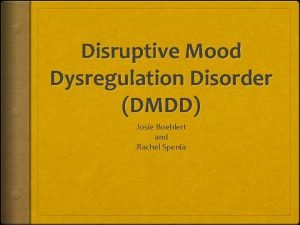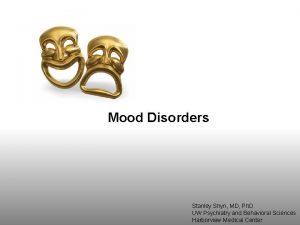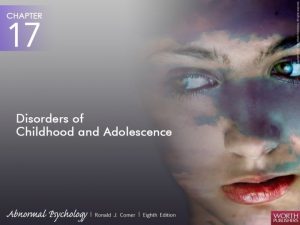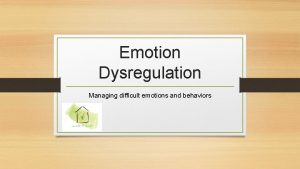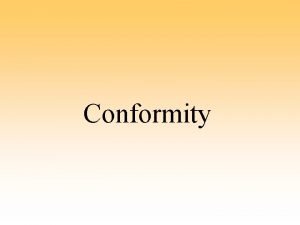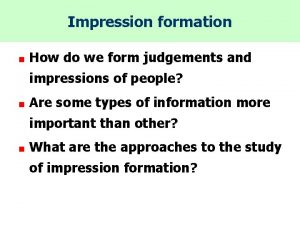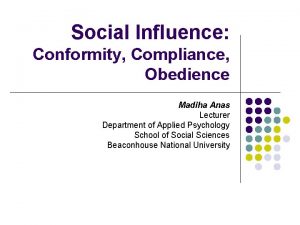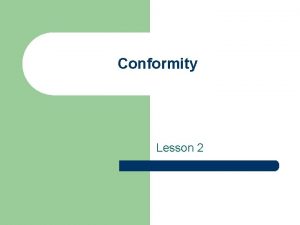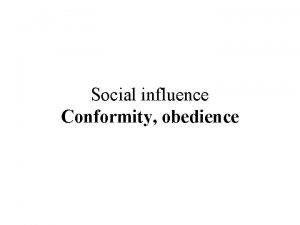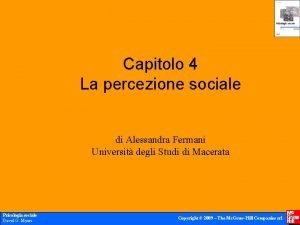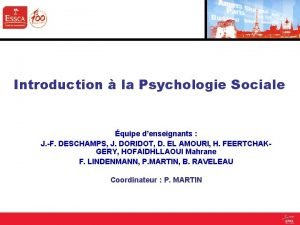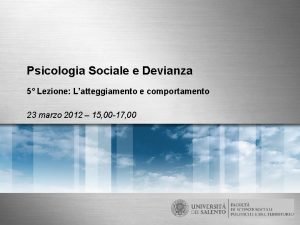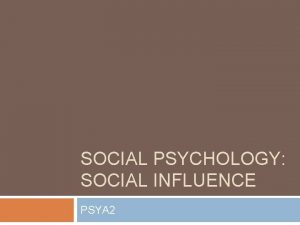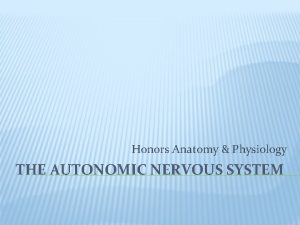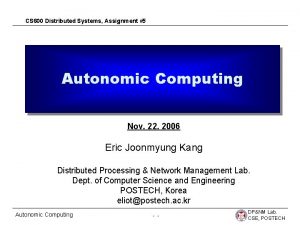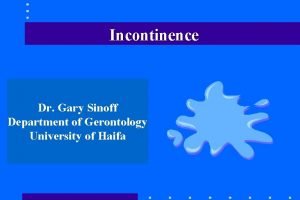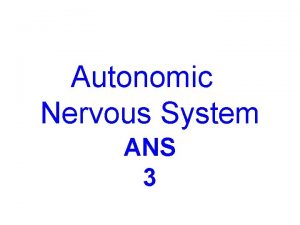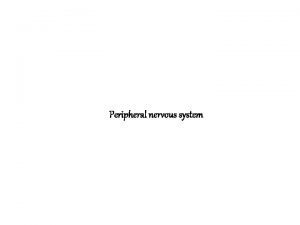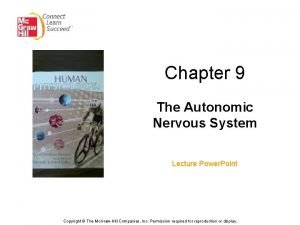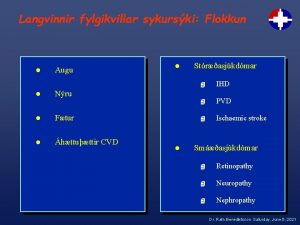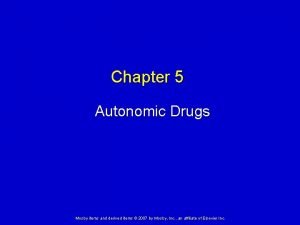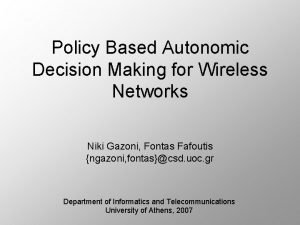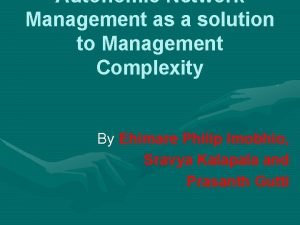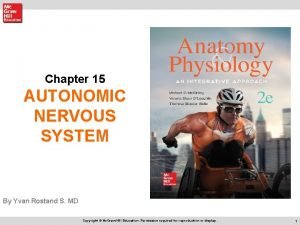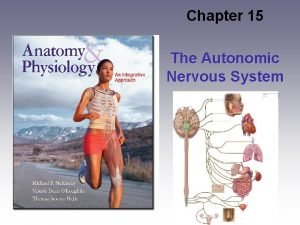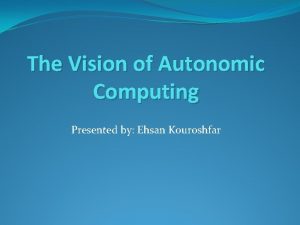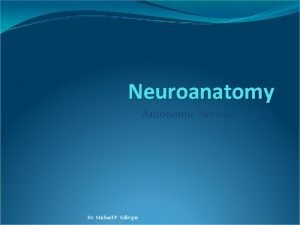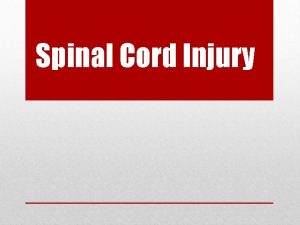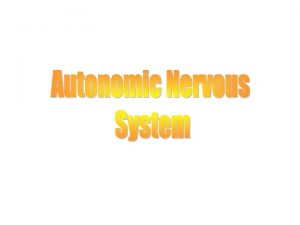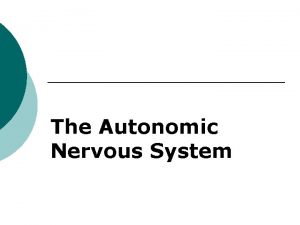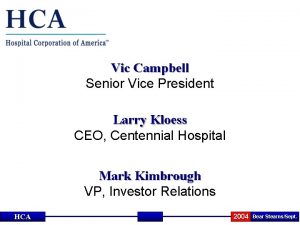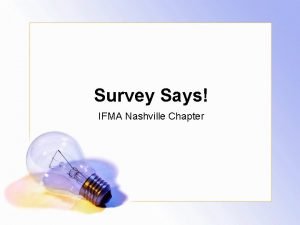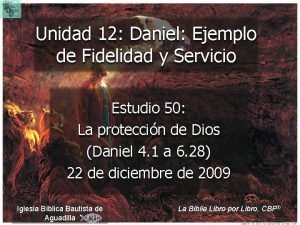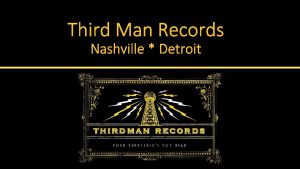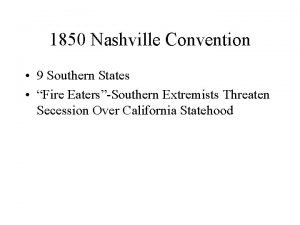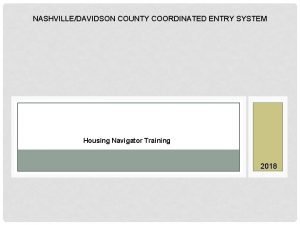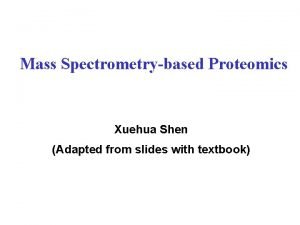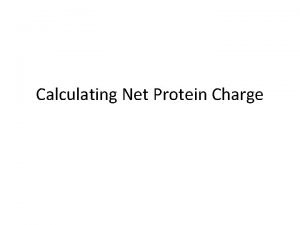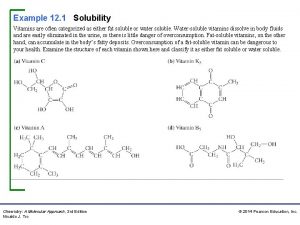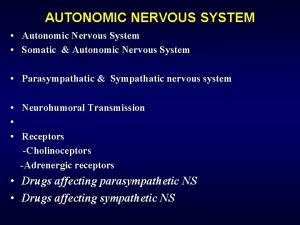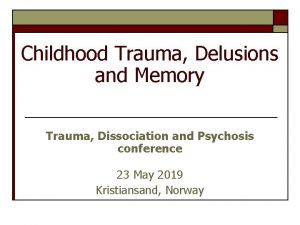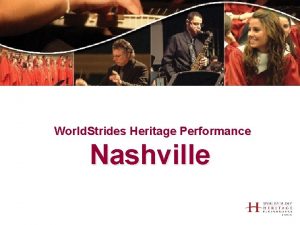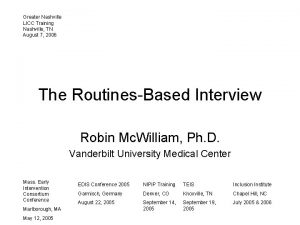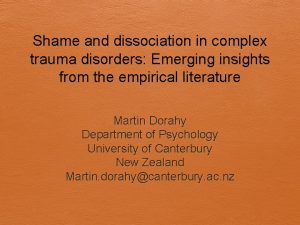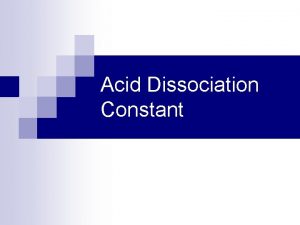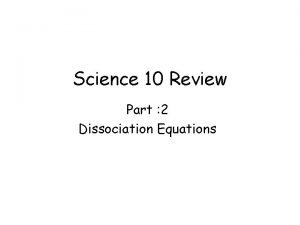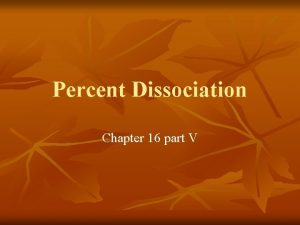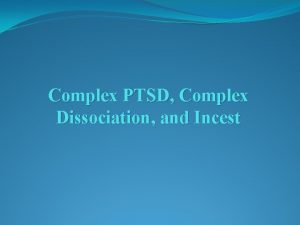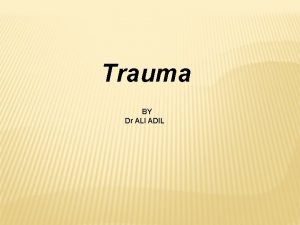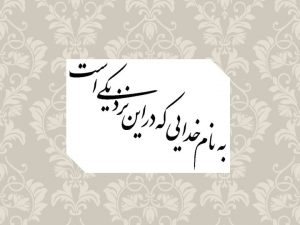ASCH 2010 Nashville Complex Trauma Dissociation Autonomic Dysregulation















![Dissociation as an Adaptive Mechanism Ludwig (1983 AJCH 26, 93 -99) states that: [Dissociation] Dissociation as an Adaptive Mechanism Ludwig (1983 AJCH 26, 93 -99) states that: [Dissociation]](https://slidetodoc.com/presentation_image/62300468f0c7dde628547aaf9e43564c/image-16.jpg)


















































- Slides: 66

ASCH 2010, Nashville Complex Trauma, Dissociation, Autonomic Dysregulation, and Physical Disease Carol B. Low, Psy. D. Center for Conscious Living Naperville, IL ASCH 2010 David C. Flemming, M. D. Henry Heywood Hospital Gardner, MA Center for Conscious Living

The Body Bears the Burden If all physical disease represents a disturbance of regulation and all psychopathology represents disordered self-regulation, this clearly indicates that a difference between physical and psychosomatic disease is meaningless and misleading. Trauma changes the brain, which changes the body. Robert Scaer, MD , 2001, Haworth ASCH 2010 Center for Conscious Living

Disease Defined n Disease is an imbalance between the individual organism and the environment. n …a principal cause associated with a variety of secondary factors. n Risks with which we cannot cope become causes of disease. Disease in Search of Remedy, Peter Marcuse, 1996, U of IL ASCH 2010 Center for Conscious Living

What is Stress? n “The nonspecific response of the body to any demand. " Hans Selye 1936 n physical or mental, internal or external, isolated or continual n causes disequilibrium, which can be good (eustress) for creating adaptation and resilience, but can also become overwhelming (distress) and cause the breakdown of systems…. . ASCH 2010 Center for Conscious Living

The Disease Model n Most western medicine focuses on removing the proximal cause (germ) or the effect (damaged tissue) or eliminating the symptom (pain, inflammation, depression). n The model is to treat disease rather than to treat the individual. n Medication, surgery, even physical therapy often ignore the information a disease provides about the state of imbalance within the organism. ASCH 2010 Center for Conscious Living

The Disease Model n Focusing on disease rather than reestablishing equilibrium / wellness leads to failure to take other causes into account, thus failing to effect a true cure. n Focus on being treated rather than getting well, reinforcing sense of helplessness and discouraging self-efficacy. n Reinforces the concept of having something wrong, being “defective, ” rather than seeing symptoms as information. ASCH 2010 Center for Conscious Living

Disease as Disequilibrium True healing often requires some detection. n Why is that disease present now? n Is there a message in the symptom(s) beyond the obvious? An integrated treatment model allows the whole organism to be treated rather than the disease. ASCH 2010 Center for Conscious Living

Trauma: There Is No Escape DSM-IV-TR (2000) To experience, witness, or be confronted with an event or events that involve actual or threatened death or serious injury, or a threat to the physical integrity of self or others, and the person's response involves intense fear, helplessness, or horror. ASCH 2010 BUT… Center for Conscious Living

Trauma expanded David Baldwin (Trauma-Pages. org 2005): In the "purest" sense, trauma involves exposure to a lifethreatening experience. This fits with its phylogenetically old roots in life-or-death issues of survival, and with the involvement of older brain structures (limbic system) in responses to stress and terror. Yet, many individuals exposed to violations or betrayals by people or institutions they must depend on or trust (a parent or physician) also show PTSD-like symptoms -- even if their abuse was not directly life-threatening. ASCH 2010 Center for Conscious Living

Trauma is the ultimate DIStress, producing extreme Disequilibrium. ASCH 2010 Center for Conscious Living

Dissociation: Escaping the Inescapable The DSM-IV definition: a disruption in the usually integrated functions of consciousness, memory, identity, perception of the environment. BUT… ASCH 2010 Center for Conscious Living

Dissociation: Not Just for Minds This neglects somatoform dissociation: disturbance in the integration of the somatic components of function, reaction, experience. as defined by Nijenhuis…. ASCH 2010 Center for Conscious Living

Psychoform Dissociation Negative Psychoform Symptoms q amnesia derealization q depersonalization emotional anesthesia Positive Psychoform Symptoms q hearing voices q “made” emotions q re-experiencing affective components of trauma ASCH 2010 Center for Conscious Living

Somatoform Dissociation Negative Somatoform Symptoms q analgesia apraxia q catalepsy anesthesia Positive Somatoform Symptoms q localized pain q “made” sensations or movements q re-experiencing bodily components of trauma ASCH 2010 Center for Conscious Living

Somatic vs Somatoform Dissociation accounts for the failure of the DSM to include symptoms of psyche and soma in a comprehensive construct, but may itself fail to account for a wider range of physical symptomatology resulting from dysregulation triggered by trauma, which can be termed Somatic Dissociation, defined by actual changes in the functioning of organs or systems. ASCH 2010 Center for Conscious Living
![Dissociation as an Adaptive Mechanism Ludwig 1983 AJCH 26 93 99 states that Dissociation Dissociation as an Adaptive Mechanism Ludwig (1983 AJCH 26, 93 -99) states that: [Dissociation]](https://slidetodoc.com/presentation_image/62300468f0c7dde628547aaf9e43564c/image-16.jpg)
Dissociation as an Adaptive Mechanism Ludwig (1983 AJCH 26, 93 -99) states that: [Dissociation] has great individual and species survival value. Under certain conditions, it serves to facilitate seven major functions: ASCH 2010 Center for Conscious Living

Dissociation as an Adaptive Mechanism 1. 2. 3. 4. 5. 6. 7. The automatization of certain behaviors, efficiency and economy of effort, the resolution of irreconcilable conflicts, escape from the constraints of reality, the isolation of catastrophic experiences, the cathartic discharge of certain feelings, the enhancement of herd sense…. ASCH 2010 Center for Conscious Living

Linking Trauma and Dissociation In causalgia-dystonia, central motor control may be altered by trauma in such a way that the affected limb is dissociated from normal regulatory mechanisms. Koelman, et al. , 1999 Soleus H-reflex tests in causalgia-dystonia compared with dystonia and mimicked dystonic posture. Neurology, 53, 2196 -98. ASCH 2010 Center for Conscious Living

Trauma and Dissociation It is being proposed for many chronic medical patients who have been repeatedly told that their illness is “all in your head, ” indeed it is. But not in the way that was implied. These patients experience real physical symptoms due to changes in their brains wrought by trauma. ASCH 2010 Center for Conscious Living

ASCH 2010 Center for Conscious Living

Janet’s 19 th century constructs: “Idées Fixes” and “Automatisme Psychologique” n A new sphere of consciousness formed around the memory of intensely arousing experience; preserving cognitive, affective, and visceral elements of the trauma. n Lacking cognitive assimilation, such states fail to integrate with the consciously forming aspects of personality, yet derivative thoughts, feelings, and behaviors (including physical symptom patterns) are observed. van der Kolk & Hart 1989 Am J Psych 146, 1530 -40 ASCH 2010 Center for Conscious Living

Animal Defensive Reactions Model Pre-Attack Behaviors n Interruption of preferred activity patterns n Hiding n Narrowing of attention n Hypervigilance n Decreased frequency of feeding n Increased consumption n Orienting and alerting ASCH 2010 Center for Conscious Living

Clinical Syndromes n Eating dysregulation n Anxiety and panic n Sleep dysregulation n Immune system dysfunction n Disorders of attention & concentration n Visual disturbance ASCH 2010 Center for Conscious Living

Animal Defensive Reactions Model Circa-Attack Behaviors n Anesthesia n Analgesia n Freezing (dominant vs startle/explosive escape response vs aggression) ASCH 2010 Center for Conscious Living

Clinical Syndromes n Sensorimotor dysregulation: n Paresthesias n Catatonia n Muscle spasm n Mood dysregulation n Autonomic nervous system dysregulation n Digestive dysregulation n Cardiac, circulatory, respiratory dysregulation n Immune & endocrine dysregulation n Cognitive & memory disturbances ASCH 2010 Center for Conscious Living

Animal Defensive Reactions Model Post-Attack Behaviors n Recuperative behavior n Return of pain n Post-freeze autonomic discharge (vs kindling via stored energy) n Collapse if defense has failed ASCH 2010 Center for Conscious Living

Clinical Syndromes n Chronic pain n Chronic Fatigue/ Fibromyalgia n Memory disturbances n Autonomic dysregulation: cardiac arrhythmias n Vaso-constriction: ulcerative phenomena n Hyper-immunity n Endocrine dysregulation: organ hypermotility ASCH 2010 Center for Conscious Living

Freeze / Immobilization and Survival Baby Chicks Not Immobilized Spontaneous Recovery Forced Recovery Best Intermediate Worst Drowning Survival Survival Ginsberg, 1974 ASCH 2010 Center for Conscious Living

Freeze Response Physiology n A state of profound cyclical autonomic dysregulation with high vagal tone n A high endorphin state with numbing, dulling of perception and cognition ASCH 2010 Center for Conscious Living

Oscillation in the Autonomic Nervous System Sympathetic Parasympathetic trauma vs homeostasis ASCH 2010 Center for Conscious Living

Conditioning in Trauma n Life threat in a state of helplessness leads to the freeze response. n Lack of either completion of the defense or discharge imprints the sensorimotor cues of the traumatic event as well as the state of arousal within procedural memory. n Freeze discharge extinguishes these cues from memory. ASCH 2010 Center for Conscious Living

Kindling n In animal studies, repeated stimulation of a certain area in the brain at a level below the seizure threshold eventually kindles the area and triggers a seizure. n The brain region most susceptible to kindling is the amygdala. n Scaer postulates that the inability to discharge the energy generated by the freeze response during trauma results in kindling of the amygdala with lowered threshold to similar stimuli, which worsens over time. ASCH 2010 Center for Conscious Living

Learned Helplessness n As per Seligman’s model, repeated inescapable attacks or traumas resulting in unresolved freeze produce learned helplessness. n The individual becomes stuck in a feedback loop with a biological basis and a psychophysiological effect. ASCH 2010 Center for Conscious Living

Learned Helplesness n The symptom pattern has essentially become a conditioned response and is outside of conscious control. n Stimuli reminiscent of the trauma trigger the conditioned response, which may be in the form of physical symptoms or psychological symptoms. ASCH 2010 Center for Conscious Living

Resiliency / Vulnerability to Trauma n. Fear-conditioned and kindled vulnerability to retraumatization is based on the prior cumulative burden of life trauma. n We must reexplore what we define as trauma, especially in infancy and childhood. ASCH 2010 Center for Conscious Living

Development of Resiliency or Vulnerability to Trauma n Early resiliency to fear conditioning or trauma may be established in a good enough environment in the first 6 -12 months of life…. or n Lack of stressors may leave an individual illprepared for the challenges of adult life…. or n Disturbances of normative developmental processes in the infant’s environment may create vulnerability to future trauma. n Early trauma must often be located and processed to heal late trauma. ASCH 2010 Center for Conscious Living

Functional Disorders of Dysregulation Many functional illnesses known to resist allopathic medical treatment are the result of trauma leading to systemic dysregulation. They do not follow expected patterns of cause and effect and thus are more often responsive to alternative treatments that enhance immune function and systemic balance and examine the defensive structures that maintain them. ASCH 2010 Center for Conscious Living

Why not the Disease Model? n These disorders of neural, endocrinal, and immune dysregulation, procedural memory, and somatization are deeply imbedded in the defensive structure of the individual. n Because they are essentially dissociated and exist in a high endorphinergic state, these disorders do not obey the rules of allopathic medical diagnosis or treatment. ASCH 2010 Center for Conscious Living

Why not the Disease Model? n From paralysis after insertion of dorsal column stimulators to failed sympathectomies to reflexive worsening of pain after massage therapy, clients with these disorders demonstrate the dissociative nature of their problems. n Patients are highly likely to take what is said to them as hypnotic suggestion. n Trying to make it better without regard to the defensive system can be ineffective at best and dangerous at worst. ASCH 2010 Center for Conscious Living

The Stress / Trauma Model If we look at all disease as the product of dysregulation and imbalance—the failed response to stress, and all symptoms as information, we are presented with a different (though not new) paradigm for dealing with issues of wellness and illness —and a different skill set for treating professionals for reestablishing wellness. ASCH 2010 Center for Conscious Living

Trauma Past and Present n In many cases, the present trauma or environmental disturbance does not seem adequate for the symptom pattern: CRPS 1, whiplash syndrome. n Look for past sensitizing events to clarify the presentation—unresolved trauma changes the brain’s ability to cope with later trauma reminiscent of the original event. ASCH 2010 Center for Conscious Living

Goals of Therapy n Calm the nervous system: reduce ANS oscillation. n Recognize and reduce the need for the defense. n find and process the sensitizing event(s) n avoid direct assault upon the defensive system n Reassociate symptomatic part(s). ASCH 2010 Center for Conscious Living

Goals of Therapy n Manage environmental issues that contribute to or support the defense. n Reduce the psychological vulnerabilities that maintain or encourage the defense. n Enhance mood and reduce anxiety. n Reintegrate. n Remove or reduce somatic symptoms. ASCH 2010 Center for Conscious Living

Symptoms as Information n Signal that something is wrong, demanding that the individual change his behavior npain nweakness organ dysfunction concentration deficit n Defense against the disease process nfever ninflammation discharge sleep n Defense against the stressor ndissociation npain anxiety phobia ASCH 2010 Center for Conscious Living

Symptoms and their Meaning These categories are not mutually exclusive, nor allinclusive, but demonstrate some defining qualities to the syndromes they precipitate. Note the overlap with Cheek’s categories. q Introjected ego states q Developmental trauma q Personal meaning q Catastrophic events q Chronic trauma ASCH 2010 Center for Conscious Living

Psychotherapeutic Techniques n Attend to basic self-care deficits. n eating, sleeping, hygiene, safety n Create or enhance ability to relax. n progressive relaxation, self-hypnosis, meditation n Enhance body awareness, mindfulness, & grounding. n the beginning of reassociating the dissociated part is awareness of the bounds of the physical self and its contact with reality n Safe place imagery. n using whatever it takes to create sense of safety ASCH 2010 Center for Conscious Living

Psychotherapeutic Techniques n Utilize mimicked response. n medication, injection, experience n Therapeutic imagery for comfort. n locate event, setting, or sensation or create one n Hypnotic mechanical control. n note difference in this technique with dissociative symptoms ASCH 2010 Center for Conscious Living

Psychotherapeutic Techniques n Mood enhancement n cognitive, hypnotic n positive future expectancy n create safety n Anxiety reduction n cognitive, hypnotic n reduce perceived fear n Enhance interpersonal functioning n more defenses, sense of control n assertiveness ASCH 2010 Center for Conscious Living

Psychotherapeutic Techniques n Establish boundaries n defense against future intrusion n Freeze discharge or sequencing n many spontaneous movements are significant n observe carefully n movement may represent incomplete action or defense ASCH 2010 Center for Conscious Living

Pain in Trauma n Pain is an adaptive mechanism whose purpose is to signal the body to stop and care for an insult or injury. n At the moment of injury, the individual tends not to feel pain regardless of the severity of the injury, allowing the focus to be on attaining safety. ASCH 2010 Center for Conscious Living

Post-Traumatic Pain n After trauma, pain sensation returns to stimulate self-care behaviors. Pain should abate as selfcare continues, as long as appropriate healing ensues. n However, due to the high endorphinergic state of the freeze response, post-traumatic pain syndromes tend not to abate with healing nor with standard treatment. ASCH 2010 Center for Conscious Living

Complex Regional Pain Syndrome as a Dissociative Disorder q The pain and the soma do not match—no known source of nociception, or a gross mismatch between reported pain and medical findings. q The thalamus, which is highly active in extreme pain, is silent in RSD. Severance of the dorsal horn, the location of endorphin regulation of up-going signals, leads to an RSD-like picture in mammals. q Clients undergoing therapies that ought to reduce pain that is maintained by normative pain controls fail to attain remission—drugs, surgeries, TENS units, etc. —or remit temporarily to relapse with increased symptoms. ASCH 2010 Center for Conscious Living

Complex Regional Pain Syndrome as a Dissociative Disorder q Paradoxical treatments may work, such as Nalaxone, an anti-endorphinergic, which often decreases pain in RSD. q Cyclical nature of symptoms—parasympathetic and sympathetic. q Dissociation may exist between the affect or functioning and the reported pain. q There appears in each case to be a psychological defense involved. q Patients often create extreme dissociations, both psychoform and somatoform, to defend the pain against the perceived medical assault. ASCH 2010 Center for Conscious Living

Psychotherapeutic Techniques n Ego state work: n enhance ego strength n reframe introjected ego states n rescue traumatized ego states n locate developmentally stuck ego states n use age regression, exploration, and working through with a gentle approach n alter negative personal meaning n using cognitive means and regression as appropriate n integrate dissociated part n based upon the meaning that was established ASCH 2010 Center for Conscious Living

Ego States and Trauma n Theoretically, a severely traumatized child may fail to integrate ego states, demonstrating the more “classic” syndromes of extreme dissociation—essentially failure to associate. n A less severely traumatized child may integrate, but ineffectively, leaving unintegrated or partially integrated aspects of the self along the way. n Adult trauma may cause aspects of the trauma to form dissociative states in an individual lacking other coping mechanisms. ASCH 2010 Center for Conscious Living

Ego States and Trauma n A traumatized individual may exhibit symptoms representative of the trauma. n Essentially the trauma has been dissociated into an ego state with a non-permeable or semi-permeable boundary containing a limited set of emotion(s), perception(s), and response(s): physical and mental states. ASCH 2010 Center for Conscious Living

Ego States and Trauma The neurological and behavioral patterns of RSD may become adopted as the physiological signature of a dissociated ego-state. Flemming, et al 1997 Clinical Bulletin of Myofascial Therapy, 2 ASCH 2010 Center for Conscious Living

Ego States and Trauma Dissociated ego states may represent: n a person, overidentification n an event, as in a specific trauma n an emotive or behavioral state n a body part or region ASCH 2010 Center for Conscious Living

Medical Intervention as Adjunct n Due to the dissociated, defensive nature of these syndromes, allopathic treatment often fails or stimulates defensive worsening and even medical crisis. n Careful application of medical treatment can offer a tool for reassociating the nervous system. ASCH 2010 Center for Conscious Living

Adjunctive Somatic Therapies Sensorimotor work: n mindfulness n body awareness n integration n successful completion of the action n boundary setting n freeze discharge ASCH 2010 Center for Conscious Living

Adjunctive Somatic Therapies Massage therapy: n comfort and relaxation n safe touch n calm autonomic nervous system n loosen tight muscles n work trigger points n caution: avoid setting off defenses ASCH 2010 Center for Conscious Living

Adjunctive Somatic Therapies Feldenkrais® therapy: n break stuck neuro-muscular patterns n provide novel movement experience n provide slow, gentle movement n encourage formation of new neural pathways n again, being mindful of the defenses ASCH 2010 Center for Conscious Living

Adjunctive Somatic Therapies Yoga, Tai Chi, other Eastern techniques: n encourage mindfulness n assist grounding n help establish boundaries n decrease autonomic arousal n enhance sense of control ASCH 2010 Center for Conscious Living

Conclusion A respectful, integrated approach to treatment of disorders of dysregulation secondary to trauma helps to avoid retraumatizing the client while allowing the defenses to be gently decreased and the symptomatic system(s) or body part(s) to be gradually reintegrated and returned to normal functioning. ASCH 2010 Center for Conscious Living

Conclusion Psychological treatment in conjunction with somatic treatment and an informed medical approach has the potential to heal many traumatized individuals and relieve them of their status as chronic medical patients whose illness is “all in their heads. ” ASCH 2010 Center for Conscious Living

Center for Conscious Living Carol B. Low, Psy. D. 1813 N. Mill Street, Suite E Naperville, Illinois 60563 630 -249 -1983 drlow@pobox. com www. Centerfor. Conscious. Living. com ASCH 2010 Center for Conscious Living
 Dmdd
Dmdd Bdt emotional dysregulation
Bdt emotional dysregulation Dmdd disorder
Dmdd disorder Mood dysregulation disorder
Mood dysregulation disorder Emotional dysregulation
Emotional dysregulation Asch conformity experiment results
Asch conformity experiment results Asch's configural model
Asch's configural model Asch 1955
Asch 1955 Socialpsykologiska experiment
Socialpsykologiska experiment Obedience psychology
Obedience psychology Asch conformity experiment
Asch conformity experiment Two types of conformity
Two types of conformity Modello configurazionale di asch
Modello configurazionale di asch Expérience de asch 1946
Expérience de asch 1946 Modello configurazionale
Modello configurazionale Conformity psychology
Conformity psychology Visceral reflex arc in order
Visceral reflex arc in order Autonomic nerveous system
Autonomic nerveous system An architectural blueprint for autonomic computing
An architectural blueprint for autonomic computing Somatic motor neuron
Somatic motor neuron Automatic bladder
Automatic bladder Autonomic drugs
Autonomic drugs Pns
Pns Adrenergic receptors sympathetic or parasympathetic
Adrenergic receptors sympathetic or parasympathetic Diabetic autonomic neuropathy
Diabetic autonomic neuropathy Mosby items and derived items
Mosby items and derived items Autonomic nervous system consists of
Autonomic nervous system consists of Autonomic decision making
Autonomic decision making Autonomic computing ibm
Autonomic computing ibm Autonomic network management
Autonomic network management Sympathetic tone definition
Sympathetic tone definition Autonomic dysreflexia
Autonomic dysreflexia Autonomic nervous system
Autonomic nervous system The vision of autonomic computing
The vision of autonomic computing Autonomic receptors
Autonomic receptors Autonomic motor neurons regulate visceral activities by
Autonomic motor neurons regulate visceral activities by Visceral nervous system
Visceral nervous system Autonomic nervous system table
Autonomic nervous system table Autonomous vs automatic bladder
Autonomous vs automatic bladder 副交感神経
副交感神経 The autonomic nervous system controls
The autonomic nervous system controls Autonomic reflexes
Autonomic reflexes Pauline and bruno have a big argument
Pauline and bruno have a big argument Freud complexes
Freud complexes Droplet infection
Droplet infection What are defense mechanisms according to freud?
What are defense mechanisms according to freud? Simple, compound complex rules
Simple, compound complex rules Sublimation defense mechanism
Sublimation defense mechanism Issac
Issac Hope lodge nashville
Hope lodge nashville Victor campbell nashville net worth
Victor campbell nashville net worth Hookers nashville tn
Hookers nashville tn Ifma nashville
Ifma nashville Teach them diligently nashville
Teach them diligently nashville Daniel 6 16
Daniel 6 16 Tmr records
Tmr records Greensboro sit ins significance
Greensboro sit ins significance Elephant eating habits
Elephant eating habits Nashville convention 1850
Nashville convention 1850 Nashville hockey club
Nashville hockey club Coordinated entry system nashville
Coordinated entry system nashville Nashville tash
Nashville tash Egg donation nashville tn
Egg donation nashville tn Aluminum chloride dissociation
Aluminum chloride dissociation Collision induced dissociation
Collision induced dissociation Dissociation constant protein
Dissociation constant protein Site:slidetodoc.com
Site:slidetodoc.com
